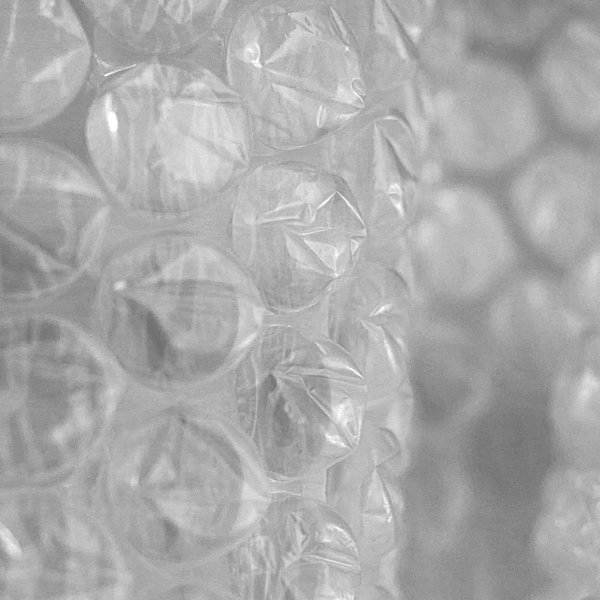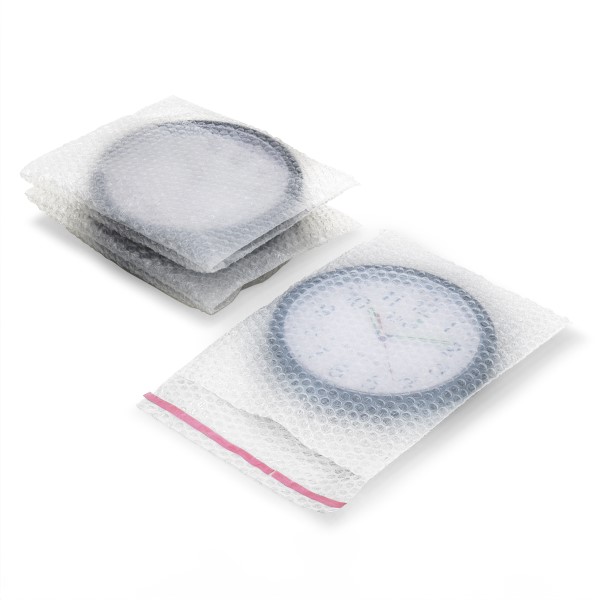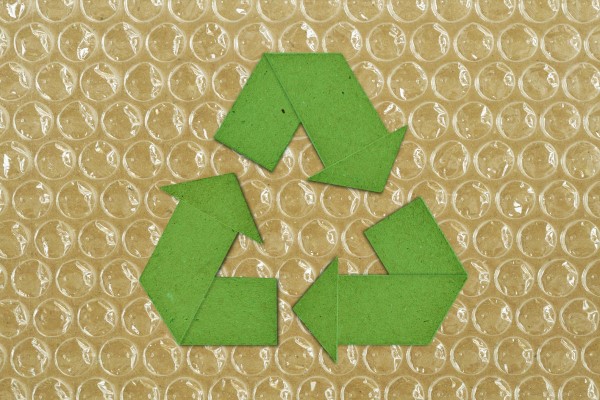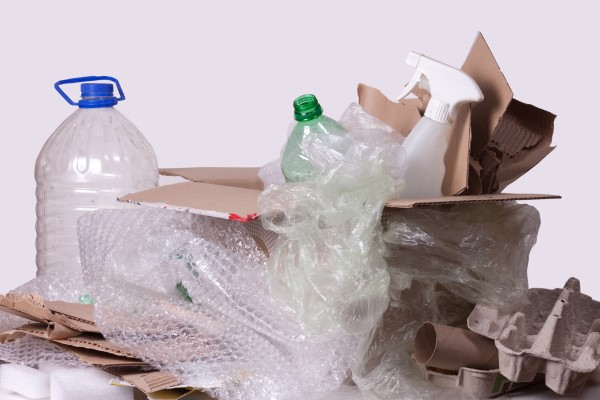Frequently Asked Questions: Bubble Wrap Packaging Products
What is bubble wrap?

Bubble wrap is a form of protective packaging that cushions your items within a box. Packers use it to wrap, interleave or fill voids. As a packing material provides a great defence against impact damage, scratches and scrapes during shipping and handling.
As packages encounter many touchpoints in supply chains, wrapping your goods prepares them for safe shipping and handling.
What is bubble wrap made from?
Standard varieties are made from Low Density Polyethylene film (LDPE).
When made with other materials, bubble packaging is perfect for specialist needs and products. For example, our specialist furniture protection combines high-quality bubbles and lamination with special protective coatings. Because of this, it keeps your high polished furniture safe from knocks, scuffs, scrapes and vibrations. It stops the build-up of static electricity as it is also anti-static.Â
How was it invented?
Bubble wrap was invented in New Jersey by two engineers, Alfred Fielding and Marc Chavannes. They were trying to create a new type of textured wallpaper which ended up being commercially unsuccessful. Later, they repurposed it as packaging, and it has since become a material we all trust.
What are the top uses of bubble wrap?
Bubble wrap products mainly protect breakable and fragile items during storage, moving and shipping. The wrap has pockets of sealed air which look like bubbles, giving the material its name. These cushion and protect delicate items like glassware, electronics and ceramics.
Common uses:
How many layers should I use?
This depends on the fragility and weight of the item. The general rule of thumb with protective packaging is that more is better.
You should aim to completely cover your items in one layer of bubble wrap and then wrap them in one or two layers more. This is enough for most products as one to two layers protect against scratches. Multiple layers will protect against bumps and drops. Delicate or heavy items may require three to four layers to ensure extra cushioning during transit.
Which side of bubble wrap goes inside?
When wrapping, the side with the bubbles should face inwards and directly touch your items for the best protection. This creates a protective layer that cushions, absorbs shock and prevents damage to your items. It also reduces the risk of scratches or scrapes on the surface of your items. The bubbles hold your items in place and reduce the risk of slipping and shifting.
Having the smooth side on the outside makes the package easier to tape and handle during packing.
Is bubble wrap reusable?
Yes, you can reuse bubble wrap many times if it is in good shape and the bubbles are still intact. Your customers may reuse the bubble wrap you ship your goods in for gardening, insulation, or moving.
Is bubble wrap recyclable/eco-friendly?

Yes, bubble wrap is recyclable, but it isn't suitable for standard household recycling bins. See the next FAQ for more information on bubble wrap disposal and how to recycle it.
Kite branded small and large bubble wrap rolls are 100% recyclable and contain recycled materials. Our anti-static wrap is also easy to recycle as it consists of one type of PE film. As recycling capabilities vary across the UK, we always advise checking with your local council first.
Where can I recycle bubble wrap in the UK?
Since bubble wrap consists of LDPE, a thin film which often clogs recycling machines, it is not kerbside recyclable. Just like plastic bags, however, you can dispose of it in specialist bins and collection points. Local supermarkets or shopping centres offer these options.
What is the difference between small and large bubbles?
The difference between small and large bubbles in bubble wrap lies in their size and the level of protection they provide.
Small bubbles are typically around 10mm or 1/4 inch in diameter. They offer more compact cushioning and are ideal for wrapping smaller or more delicate items. Â
Large bubbles are usually about 20mm or 1/2 inch in diameter. They provide greater shock absorption and are great for heavier, bulkier items that require more padding during transit.
What's great about bubble wrap?
Bubble wrap is a popular packaging material that:
What are the downsides of using bubble packaging?

While plastic bubble wrap offers excellent cushioning and protection, it does have some downsides as it:
Where to buy bubble wrap?
We offer a wide variety of high-quality options to suit your needs. Our durable products ensure your items are well-protected in transit. Choose Kite and benefit from competitive prices, bulk discounts and fast delivery. Stocking up on the packaging materials you need has never been easier.
Plus, our commitment to the environment means you can feel good about your purchase. Our bubble wrap is recyclable with some varieties containing 30% recycled content. This is an excellent eco-friendly option for your packaging requirements.
Looking for bubble wrap near you? We have 8 sites across the UK dedicated to delivering the materials you need straight to your doorstep.
Explore our bubble products today.Â
For bubble wrap substitutes, please see Eco-friendly Alternatives to Bubble Wrap for Your Business. Along with paper bubble wrap, we have a range of other eco void filling and wrapping products available.Â
Bubble wrap guide
To learn more about the qualities, suitability and recyclability of our bubble wrap rolls, check out our guide.
{ "@context": "https://schema.org", "@type": "FAQPage", "mainEntity": [ { "@type": "Question", "name": "What is bubble wrap?", "acceptedAnswer": { "@type": "Answer", "text": " Bubble wrap is a form of protective packaging that cushions your items within a box. Packers use it to wrap, interleave or fill voids. As a packing material provides a great defence against impact damage, scratches and scrapes during shipping and handling.\n\nAs packages encounter many touchpoints in supply chains, wrapping your goods prepares them for safe shipping and handling." } }, { "@type": "Question", "name": "What is bubble wrap made from?", "acceptedAnswer": { "@type": "Answer", "text": " Standard varieties are made from Low Density Polyethylene film (LDPE).\n\nWhen made with other materials, bubble packaging is perfect for specialist needs and products. For example, our specialist furniture protection combines high-quality bubbles and lamination with special protective coatings. Because of this, it keeps your high polished furniture safe from knocks, scuffs, scrapes and vibrations. It stops the build-up of static electricity as it is also anti-static. " } }, { "@type": "Question", "name": "How was bubble wrap invented?", "acceptedAnswer": { "@type": "Answer", "text": " Bubble wrap was invented in New Jersey by two engineers, Alfred Fielding and Marc Chavannes. They were trying to create a new type of textured wallpaper which ended up being commercially unsuccessful. Later, they repurposed it as packaging, and it has since become a material we all trust." } }, { "@type": "Question", "name": "What are the top uses of bubble wrap?", "acceptedAnswer": { "@type": "Answer", "text": " Bubble wrap products mainly protect breakable and fragile items during storage, moving and shipping. The wrap has pockets of sealed air which look like bubbles, giving the material its name. These cushion and protect delicate items like glassware, electronics and ceramics.\n\nCommon uses:
Coffee table is a low table designed to be placed in front of a sofa or seating arrangement in a living room or lounge area. It typically sits at a height that is lower than the seat height of the surrounding furniture. Coffee tables serve both functional and decorative purposes in a room.
Here are some key features and aspects of a coffee table:
-
Size and Shape: Coffee tables come in a variety of sizes and shapes to fit different spaces and preferences. Common shapes include rectangular, square, round, and oval. The size of the coffee table should be proportional to the surrounding furniture and the available space.
-
Materials: Coffee tables can be made from various materials, each offering a different aesthetic and durability. Common materials include wood (such as oak, mahogany, or walnut), glass, metal (such as steel or iron), and acrylic. The choice of material often depends on the desired style and the overall decor of the room.
-
Design and Style: Coffee tables come in a range of designs and styles to complement different interior themes. From traditional and rustic to modern and contemporary, there are numerous options available. The design may feature intricate detailing, carved legs, sleek lines, or unique shapes to create a statement piece or blend in with the existing furniture.
-
Functionality: Coffee tables serve various functional purposes. They provide a convenient surface for placing items such as drinks, snacks, magazines, books, or remote controls within easy reach. Some coffee tables come with additional features like built-in storage shelves, drawers, or lift-up tops, offering extra space to keep items organized and hidden.
-
Versatility: Coffee tables are versatile pieces of furniture that can be used for multiple activities. They can be a surface for playing games, working on a laptop, or even dining in a casual setting. Their low height makes them suitable for propping up feet or serving as a display area for decorative items like vases, candles, or art pieces.
-
Arrangement and Placement: Coffee tables are typically placed in front of seating arrangements, such as sofas or armchairs. They create a central focal point in the room and facilitate social interactions by providing a convenient surface for guests to place their belongings or beverages.
Wooden Coffee Tables,White Coffee Tables,Coffee Table with Storage,Round Coffee Table,Glass Coffee Table
Ningbo Greenly Industy Co.,LTD. , https://www.chinagreenly.com